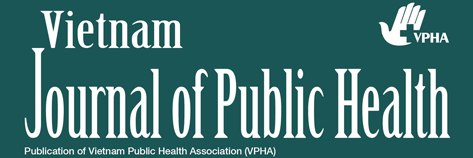Gender difference in metabolic syndrome and some associated factors among the elderly at Thai Binh Medical University Hospital
Abstract
Submitted date: 07 Jul 2024
Accepted date: 25 Sep 2024
Background: The prevalence of metabolic syndrome (MetS) in adults in Thai Binh province was still high (28.4%). However, previous studies on the prevalence of MetS among the elderly were still limited and inconsistent. Therefore, The objective of this study was to examine gender differences in metabolic syndrome (MetS) characteristics and some associated factors.
Materials and Methods: A convenience sample of 404 elderly outpatients was recruited from Thai Binh Medical University Hospital. The general information and history of falls, sleep quality score, smoking, alcohol use, and body mass index (BMI) of the subjects were collected through questionnaires, and each patient's height, Weight, waist circumference (WC), and other physical signs were measured. MetS was diagnosed based on the criteria of the National Cholesterol Education Program Adult Treatment Panel III (NCEP-ATP III). Logistic regression analysis was used to analyze the risk factors of MetS and its components.
Results: The prevalence of MetS in elderly females (36.0%) is higher than in males (18.5%) (p<0.001). The three component indices of MetS are low HDL-cholesterol ratio, high triglyceride (TG), and higher WC in females than males. In contrast, the two indices, high blood pressure (BP) and elevated blood sugar (BS), showed the opposite. Some factors associated with MetS in both genders are BMI, BS, and TG, but older men with a history of smoking [OR (95%CI), 3.2 (1.2-8.2)], and older women with a history of falls [OR (95%CI), 1.6 (1.1-2.4)] have a higher risk of MetS than other subjects.
Conclusions: There were significant differences in MetS components in the two sexes. In additions, there are different factors related to the prevalence of MetS in both sexes: smoking history in men and history of falls in women. Keywords: Gender differences; Metabolic syndrome; Elderly; Risk factors.



